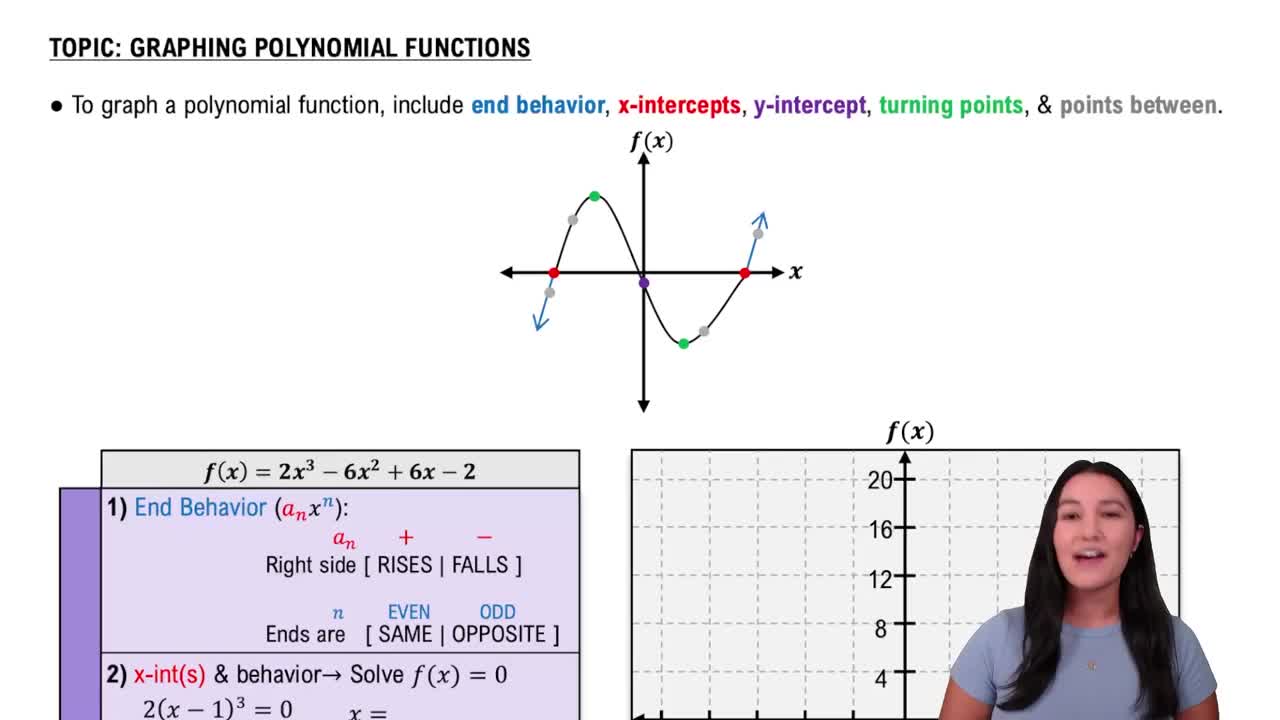Table of contents
- 0. Review of Algebra4h 16m
- 1. Equations & Inequalities3h 18m
- 2. Graphs of Equations43m
- 3. Functions2h 17m
- 4. Polynomial Functions1h 44m
- 5. Rational Functions1h 23m
- 6. Exponential & Logarithmic Functions2h 28m
- 7. Systems of Equations & Matrices4h 6m
- 8. Conic Sections2h 23m
- 9. Sequences, Series, & Induction1h 19m
- 10. Combinatorics & Probability1h 45m
1. Equations & Inequalities
Linear Inequalities
Problem 55e
Textbook Question
Solve each rational inequality in Exercises 43–60 and graph the solution set on a real number line. Express each solution set in interval notation. (x + 1)/(x + 3) < 2
 Verified step by step guidance
Verified step by step guidance1
Step 1: Start by rewriting the inequality \( \frac{x + 1}{x + 3} < 2 \) in a form that can be solved. Subtract 2 from both sides to get \( \frac{x + 1}{x + 3} - 2 < 0 \).
Step 2: Combine the terms on the left side over a common denominator. Rewrite 2 as \( \frac{2(x + 3)}{x + 3} \) to get \( \frac{x + 1 - 2(x + 3)}{x + 3} < 0 \).
Step 3: Simplify the numerator. Distribute the -2 to get \( x + 1 - 2x - 6 \), which simplifies to \( -x - 5 \). The inequality becomes \( \frac{-x - 5}{x + 3} < 0 \).
Step 4: Identify the critical points by setting the numerator and denominator equal to zero. Solve \( -x - 5 = 0 \) to find \( x = -5 \) and \( x + 3 = 0 \) to find \( x = -3 \).
Step 5: Use the critical points to test intervals on the number line: \((-\infty, -5)\), \((-5, -3)\), and \((-3, \infty)\). Determine where the inequality holds true and express the solution set in interval notation.
Recommended similar problem, with video answer:
 Verified Solution
Verified SolutionThis video solution was recommended by our tutors as helpful for the problem above
Video duration:
4mPlay a video:
Was this helpful?
Key Concepts
Here are the essential concepts you must grasp in order to answer the question correctly.
Rational Inequalities
Rational inequalities involve expressions that are ratios of polynomials set in relation to an inequality (e.g., <, >, ≤, ≥). To solve them, one typically finds critical points by setting the numerator and denominator to zero, which helps identify intervals to test for the inequality's truth. Understanding how to manipulate and analyze these expressions is crucial for finding valid solutions.
Recommended video:
Guided course

Rationalizing Denominators
Interval Notation
Interval notation is a mathematical notation used to represent a range of values on the real number line. It uses parentheses and brackets to indicate whether endpoints are included (closed intervals) or excluded (open intervals). For example, (a, b) represents all numbers between a and b, not including a and b, while [a, b] includes both endpoints. This notation is essential for clearly expressing the solution set of inequalities.
Recommended video:

Interval Notation
Graphing Solution Sets
Graphing solution sets on a real number line visually represents the range of values that satisfy the inequality. This involves marking critical points and shading the appropriate regions based on whether the endpoints are included or excluded. Understanding how to accurately graph these solutions helps in interpreting the results and communicating them effectively.
Recommended video:

Graphing Polynomial Functions
Related Videos
Related Practice













